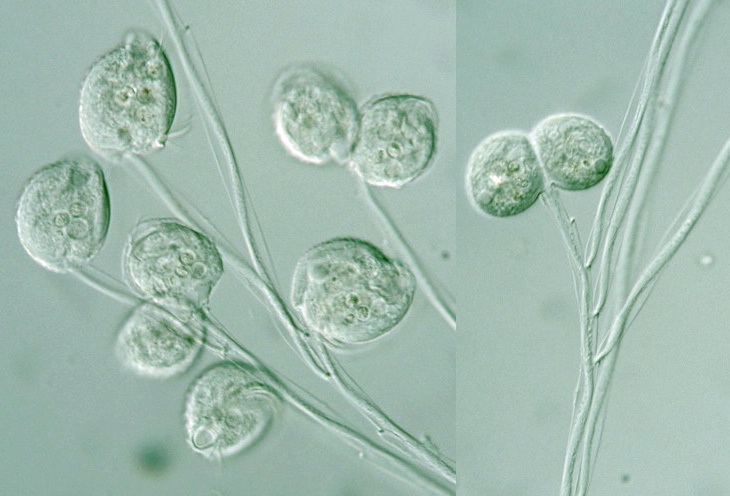 Genus: Colonial; each zooid has a separately contractile myoneme
(Illustrated Guide, 1985).
Each animal has its own myoneme, can contract singly without causing colony to contract (How to know the
protozoa, 1979).
Genus: Colonial; each zooid has a separately contractile myoneme
(Illustrated Guide, 1985).
Each animal has its own myoneme, can contract singly without causing colony to contract (How to know the
protozoa, 1979).
Species:















Carchesium polypinum Linnaeus, 1758: 100-125 μm long; colony up to 3 mm; fresh water (Kudo, 1966). 120-125 μm long (How to know the protozoa, 1979). Body bell-shaped; 80-140 μm long; a macronucleus C-shaped (Kojima, et al., 1995).
Carchesium granulatum Kellicott: About 100 μm long; two contractile vacuoles anterior (Kudo, 1966).
cf.
Zoothamnium: Like Carchesium but myonemes of individuals are connected as a single, branched
contractile system, whole colony contracts at once (How to know the protozoa, 1979).